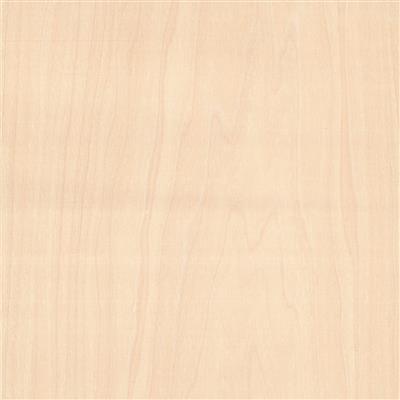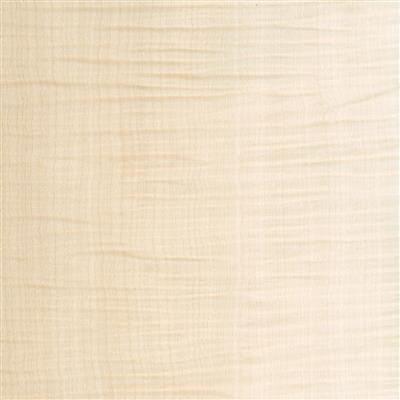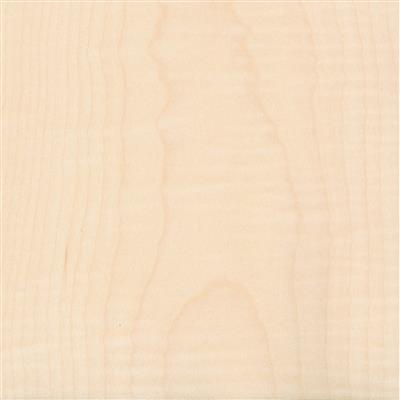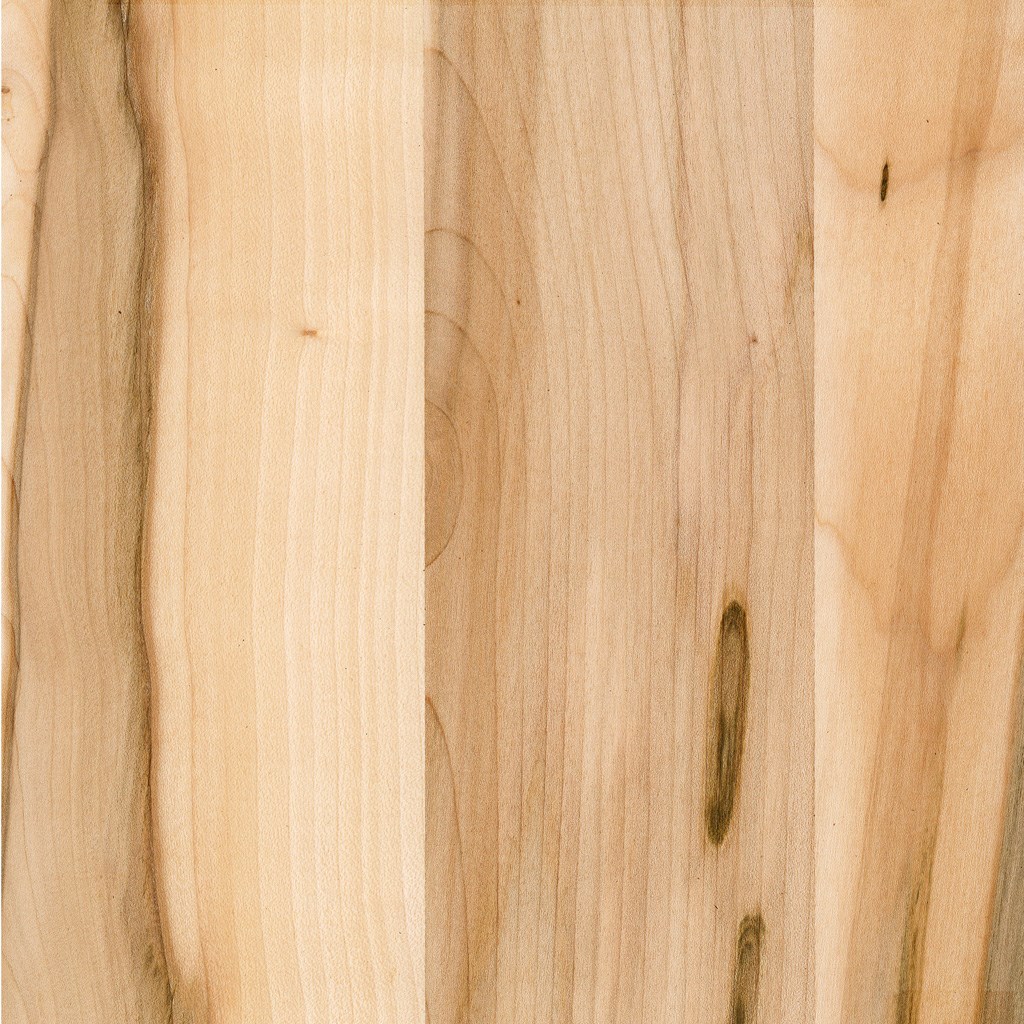Veneer Sycamore 0.56 mm
The maple genus (Acer) comprises about 110 to 200 species and is distributed over large parts of Europe and North America. The sycamore maple (Acer pseudoplatanus) is one of the most valuable deciduous trees. The curly maple, also called curly maple, is particularly decorative and valuable.
Trade names and other names
Abbreviation DIN EN 13556: ACPS
Botanical name: Acer pseudoplatanus
German: europäischer Ahorn, sycamore maple, white maple, false plane tree
English: false planetree, great maple, scottish maple, sycamore, sycamore maple, sycamore
French: érable blanc, érable sycomore, sycomore, asarot, érable
Italian: acero di montagna, platano falso, sicomoro, acero fico
Spanish: arce blanco, arce plátano falso, arce sicomoro, falso plátano, sicomoro
Portuguese: bordo-americano, falso-plátano, paveiro, platano bastardo
Dutch: europees esdoorn
Technical wood properties
Weight fresh/green: 830 - 1040 kg/m³
Density air dry (12-15% u): 530 - 790 kg/m³
Tensile strength: 82 - 114 N/mm²
Compressive strength: 29 - 72 N/mm²
Flexural strength: 50 - 140 N/mm²
Shear strength: 9 - 15 N/mm²
Hardness according to Brinell BII: 53 - 70 N/mm²
Hardness according to Brinell B⊥: 19 - 35 N/mm²
Differential shrinkage (radial): 0.10 - 0.20%
Differential shrinkage (tangential): 0.22 - 0.30%
Natural durability (DIN-EN 350-2): 5, not durable
Values of the technical properties of a wood species refer to a wood moisture content of u ≅12% to 15%. Data without guarantee.
Occurrence
Sycamore maple is widespread throughout Central Europe and also occurs in Turkey, the Caucasus, the Mediterranean region and Great Britain. Acer pseudoplatanus does not occur in pure stands but only in association with other hardwood species.
Trunk and bark
Maple can reach a height of up to 30 m and a diameter of up to 1.0 m. It is usually found from 40 years onwards. Maple is usually used from a diameter of 40 cm, as disturbing discolouration occurs with increasing diameter. The bark is grey, long and smooth with thin flaking scales when old.
Characteristics and wood colour
The annual rings of maple are visible as fine lines through the darker late wood. The vessels are not visible and the frequent, fine medullary rays form bright shiny lines on the brain cut. The maple wood is yellowish-white, glossy and without heartwood colouring, i.e. the sapwood and heartwood do not stand out from each other but are the same colour.
Replacement woods
American maple, Canadian maple, birch, hornbeam, boxwood.
Literature
- Wood Atlas | 6th edition in 2006 | Rudi Wagenführ
- Wood science volume 1-3 | 1982 | Hans Heinrich Bosshard
- Properties and core sizes of wood species | 1989 | Jürgen Sell / Lignum Switzerland
| Category | Veneers |
| Product group | Veneers sliced |
| Thicknesses | 0.56 mm |
| Weight kg/m2 | 0.380 |
| Specie | European Sycamore |
| Botanical name | Acer pseudoplatanus |
| Wood type | Hardwood |
| Main occurrence | Europe |
| Wood origin | France | Austria | Switzerland |
| Manufacturing/origin | Austria |
| Certification | not certified | FSC®100% |
| Colour | white |
| Hue | clear |
| Use | furniture | interior | musical instrument | doors | wood goods of all kinds | parquet production |
| Customs tariff number | 44089000 |
| Packaging | in bundle, approx. 24-32 sheets |
| Items on stock | yes |
| Date of delivery | approx. 3 - 6 working days |
| Postal shipping | nein |

 Deutsch
Deutsch
 Français
Français
 Italiano
Italiano





































